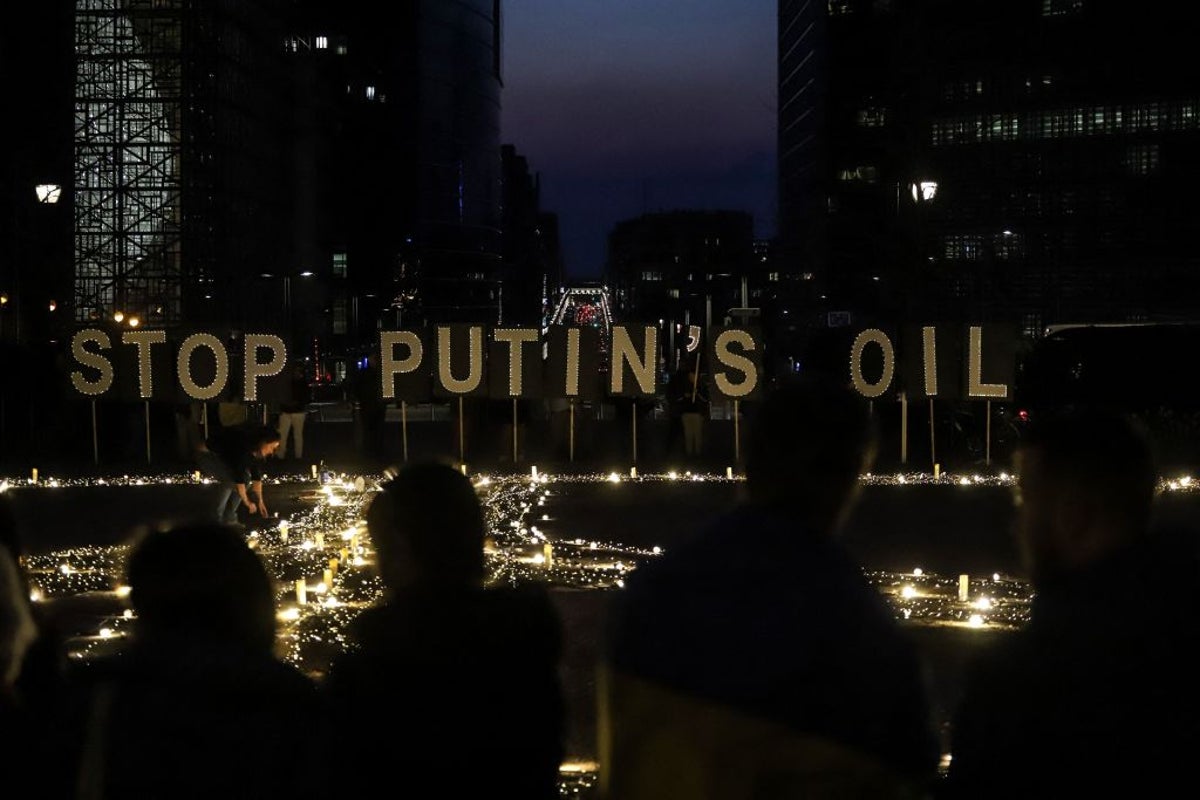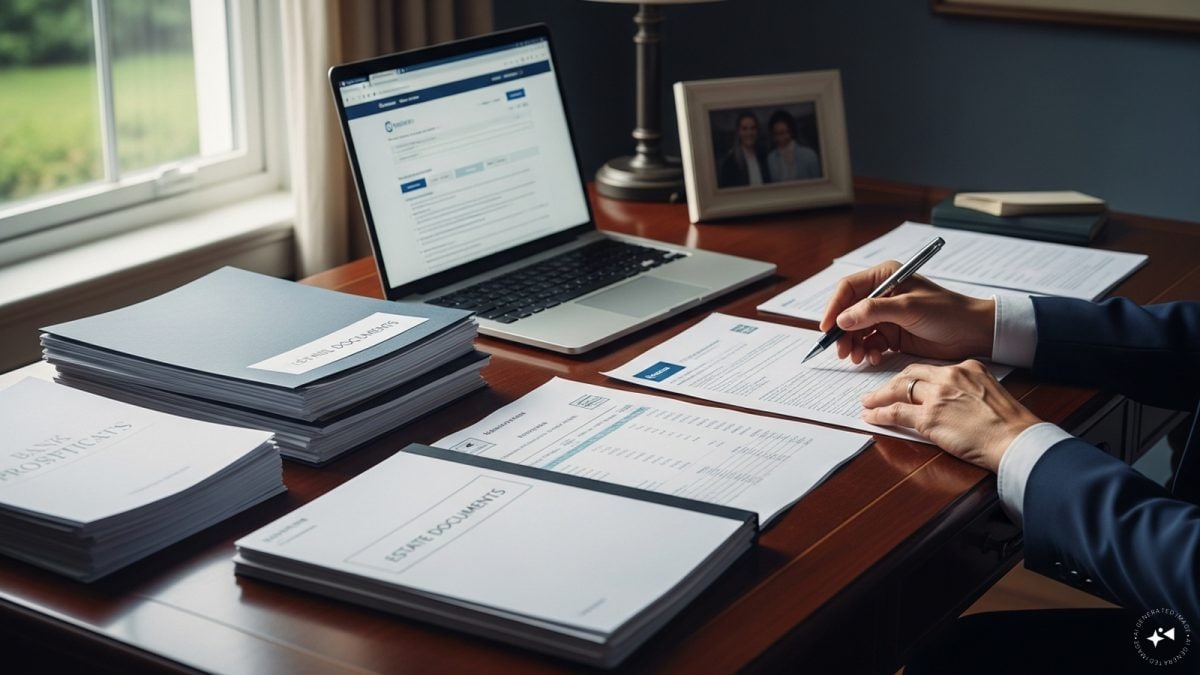Business
Which countries buy Russian oil – and what impact will sanctions have?

The US has this week imposed new sanctions on Rosneft and Lukoil, Russia’s two largest petroleum-producing companies.
After efforts to negotiate an end to Vladimir Putin’s war on Ukraine appeared to come to a standstill, the Trump administration made the move in a bid to “increase pressure on Russia’s energy sector” and “degrade the Kremlin’s ability to raise revenue for its war machine and support its weakened economy”.
So how much impact could the move have, and what are the implications for countries who rely on Russia to supply their oil?
Who buys oil from Russia?
China, India and Turkey are the biggest recipients of Russian oil that used to go to the European Union. The EU’s decision to boycott most Russian seaborne oil from January 2023 led to a massive shift in crude flows from Europe to Asia.
Since then, China has been the No 1 overall consumer of Russian energy, having purchased some $219.5bn (£164bn) worth of Russian oil, gas and coal, followed by India ($133.4bn/£100bn) and Turkey ($90.3bn/£67.7bn).
Up to 20 per cent of China’s crude oil imports come from Russia, Bloomberg reports, with data analytics firm Kpler suggesting that a quarter of that comes from Rosneft and Lukoil.
Last year, China reportedly bought 100 million tonnes of Russia crude, and last month alone it imported around 2 million barrels per day.

India is another country that makes significant purchases of Russian oil, having imported relatively little before the invasion of Ukraine. Now it imports around 1.6 million barrels a day.
Turkey is also a relatively big customer, while other purchasers include the EU, Myanmar and Azerbaijan, but it’s the deals with India and China that have the most outsized financial impact.
Analysis undertaken by the Centre for Research on Energy and Clean Air (CREA) showed the EU purchasing larger volumes of LNG and pipeline gas, while Turkey bought more oil products.
CREA analysis found that China and India had bought 85 per cent of all Russian crude oil exports in September.
Will the UK be affected?
The import, acquisition, and supply of Russian oil and oil products was banned by the UK in December 2022. However, the Treasury committee heard from experts in 2024 that Russian oil is still ending up in the UK despite sanctions, thanks to a loophole.
As long as Russian oil is refined in another country, such as India, it can avoid the ban.
Richard Bronze, head of geopolitics at Energy Aspects, told MPs that he estimated refined Russian oil to account for “well below 5 per cent” of the UK’s oil imports.
The UK joined the US in sanctioning Rosneft and Lukoil earlier this week.
What financial impact will the sanctions have?
As for how much of a hit Russia will take as a result of the new measures, the financial pinch may not be immediate.
The sanctions state that trade relations with the two Russian companies must be exited or closed by 21 November, giving India and China time to make alternative arrangements – and of course there’s the prospect that Russia will re-engage with talks during that time, in a bid to have the sanctions lifted.
However, CREA analysis showedthat Russia’s total revenue from fossil fuels in September was €546m (£474m) per day. The report also states that, if the $47.60 per barrel price cap had been fully enforced, that revenue would have been €1.53bn (£1.15bn) lower in September 2025 alone.
The most immediate impact has been a change in the price of oil. Markets typically do not like uncertainty, and the sanctions themselves were unexpected, so a quick upturn is not unusual in such circumstances.

“Oil markets have spiked higher after news emerged that the US was putting Russia’s major oil producers under sanctions due to the Kremlin’s failure to move toward peace in Ukraine,” said Steve Clayton, head of equity funds at Hargreaves Lansdown.
“Brent crude has climbed 4 per cent to almost $65 per barrel on the news, marking a dramatic recovery from recent weakness in crude markets. America’s new stance is in stark contrast to recent messaging from the White House and took markets by surprise.
“The effectiveness of the sanctions is yet to be proven, but President Trump has said that the Indian PM Narendra Modi has assured him that India will cease Russian oil purchases.”
For some context, Brent crude rose to around $77 earlier in the summer, when there were fears that Iran could entirely close the Strait of Hormuz.
How big are Rosneft and Lukoil?
The two organisations together represent about $105bn (£80bn) combined in market capitalisation – an accepted measure of the “worth” of a company – which is almost equally split, with Rosneft’s share being slightly larger. For comparison, London-listed energy firm BP is worth around £66bn.
Russia exports about 4 million barrels of oil a day, and Rosneft and Lukoil account for around half of that figure. Rosneft alone is responsible for roughly 6 per cent of global oil production.
Business
Vande Bharat sleeper: What issues have been flagged by Railway Ministry in the first train? Top things to know – The Times of India

Vande Bharat sleeper train: Indian Railways is aiming to launch the first Vande Bharat sleeper train in the coming months, but ahead of its launch the Ministry of Railways has highlighted concerns regarding the quality of furnishings and craftsmanship.Vande Bharat sleeper train will be a variant of the chair car air-conditioned service, aimed at long-distance travel on the Indian Railways network. The Vande Bharat sleeper trains are expected to offer a premium passenger experience, better than Rajdhani Express trains. The first ten trainsets are being manufactured by BEML, in collaboration with ICF Chennai.Railway minister Ashwini Vaishnaw recently said that two rakes of Vande Bharat sleeper trains will be launched together.
Vande Bharat sleeper train: What are the issues?
According to a PTI report, in a recent written correspondence to the Director General, Research Designs and Standards Organisation (RDSO) and General Managers across railway zones, the Railway Board identified several deficiencies.“There are issues related to furnishing and workmanship at many places in respect of sharp edges and comers at berthing area, window curtain handles, pigeon pockets between berth connectors inviting cleaning issues etc,” the Board said.The Board emphasised that remedial actions are essential for the present rake, whilst also stating that design enhancements would be required for subsequent rakes.The Railway Ministry has instructed zones to comply with all RDSO-specified conditions for operations reaching speeds of 160 kmph.Officials explained the authorisation procedure, stating that after RDSO obtains final CCRS approval for new train designs, CCRS forwards the matter to the Railway Ministry for operational clearance.“The CCRS during trial conveys its observations to the RDSO for compliance. In the case of the Vande Bharat Sleeper Train, the RDSO sent its updated compliance on September 1, 2025,” officials said.Officials noted that since the Vande Bharat Sleeper Train’s route remains undecided, the Ministry distributed its letter dated October 28 across all zones.The Ministry has emphasised adherence to several requirements, including fire safety protocols, installation of Kavach 4.0, establishment of reliable communication between loco pilots, train managers and station masters, and proper brake system maintenance.The railway authorities instructed regional divisions to train engine drivers for emergency uncoupling of semi-permanent couplers within 15 minutes, ensuring essential tools are included in the driver and guard equipment sets.“Suitable setting of temperature inside coaches shall be maintained to ensure comfortable conditions to passengers, considering ambient conditions and frequent opening & closing of doors,” they specified.The Ministry emphasised the importance of having trained technical personnel available to address any operational difficulties and emergencies during the journey.“Regular announcements shall be made through the PA system informing all persons other than passengers to disembark from the train before its departure. Also, pre-recorded Passenger safety announcements in three languages (Regional, Hindi & English) should be made during the run to sensitize passengers about personal safety norms to be observed during travel,” according to the directive.Additionally, the Ministry instructed regional divisions to assign skilled and dedicated personnel for Vande Bharat Sleeper Trainset maintenance, whilst ensuring sufficient spare parts and consumables are readily available.
Business
Top stocks to buy today: Stock market recommendations for November 4, 2025 – check list – The Times of India

Stock market recommendations:According to Somil Mehta, Head – Alternate Research, Capital Market Strategy, Mirae Asset Sharekhan, the top stocks to buy today on November 4, 2025 are Prestige, and Sun Pharmaceutical Industries:Prestige – Buy in the range between Rs 1782 & Rs 1783; Stop Loss: Rs 1705; Target: Rs 1930Prestige has given a breakout of a small triangle pattern on the daily chart taken support at 10 daily moving average i.e. 1740 and the stock is expected to resume the uptrend. Momentum indicators have also given a positive crossover. Key resistance for the stock is 1810 & 1900 and support is at 1730.Sun Pharmaceutical Industries – Buy in the range between Rs 1706 & Rs 1707; Stop Loss: Rs 1640; Target: Rs 1830Sun Pharmaceutical Industries has been forming a small symmetrical Triangle pattern above 20 & 40 daily moving average and the stock is expected to resume the uptrend. Momentum indicators have also given a positive crossover. The stock has been consolidating in a broad range since last two weeks and has taken support at 20 daily moving average i.e. 1678, resuming the uptrend. The stock is expected to continue the up trend. Key resistance is at 1722 & 1748 and support is at 1670. (Disclaimer: Recommendations and views on the stock market, other asset classes or personal finance management tips given by experts are their own. These opinions do not represent the views of The Times of India)
Business
How To Claim Investments Of Deceased Holders: A Step-By-Step Guide For Mutual Funds & Bank Accounts

Last Updated:
Claiming mutual fund and bank account investments after a sudden death requires key documents and a step-by-step process for heirs. Learn how to proceed.
News18
A sudden death without nomination or a proper will may become a nightmare for the spouse or children of the deceased, posing a hindrance in acquiring investments in mutual fund and bank accounts. The transfer of investments and money is possible, though there are some processes that need to be completed before.
According to an estimate, around Rs 25,000 crore worth of shares and about nearly Rs 80,000 crore of bank deposits are lying unclaimed in the country. These assets often remain unclaimed due to inadequate documentation or heirs being unaware of their existence.
Let’s have a look at these step-by-step guide to claim the investments in MFs and deposits in bank accounts of the deceased ones:
Claiming Mutual Fund (MF) investments — step by step
1) Identify the folio(s) / AMC / registrar
Check statements, broker app, emails or CAMS/KARVY/CDSL records for the folio number and AMC (fund house).
2) Contact the AMC / Registrar (CAMS/KFinTech/etc.)
Inform them of the investor’s death. Ask for the Transmission / Death claim process and request the Transmission Request Form (often called Form T3 or a death-claim form). Many AMCs publish the list of required docs on their site.
3) Fill the transmission / claim form
Form will ask claimant details (nominee or legal heir), folio, bank details where proceeds should be credited, KYC details of claimant.
4) Gather required documents (usually)
- Death certificate (original or self-attested + attestation as required).
- Transmission request / claim form (signed).
- Proof of identity & address of claimant(s) (PAN, Aadhaar, passport, etc.). PAN is commonly required for the claimant.
- If nominee is minor — guardian proof / birth certificate.
- If no nominee: legal heir certificate / succession certificate / probate / will / family tree / affidavit (as per AMC).
- Cancelled cheque or bank proof for claimant’s bank account for payouts.
5) Submit to AMC / Registrar
Submit originals where required (often for death cert) and self-attested copies for others; follow AMC/registrar’s instructions (some accept scanned copies online, some need physical submission).
6) Processing & payout / transfer
Registrar/AMC verifies documents, updates folio (transmission to nominee/legal heir) and either: (a) transfers units to nominee/legal heir folio, or (b) redeems units and pays proceeds to bank account — based on request and folio type.
Times vary; check with the specific AMC/registrar for expected timeline.
7) If there’s disagreement among heirs
AMCs may require a court order or succession certificate for large or disputed claims.
Claiming bank accounts / fixed deposits — step by step
1) Contact the bank branch (home branch)
Inform them about the account holder’s death. Ask for the bank’s deceased claim or transmission procedure and the claim form they require (banks have standard forms). Some banks allow online initiation for certain cases.
2) Documents usually required
- Death certificate (original for verification).
- Account details (passbook, account number).
- KYC of claimant(s) — PAN, Aadhaar, passport, photos.
- Claim/form signed by claimant(s).
- Cancelled cheque / bank account proof where proceeds should be credited.
If no nominee or amount above specified limits, the bank may ask for: legal heir certificate, succession certificate, or probate as per the bank’s policy and amount thresholds. Many banks have simplified limits (small amounts may be settled on affidavit + ID proofs).
For joint accounts
If survivorship clause applies, surviving joint holder(s) can claim by presenting their ID + death cert. If account was “former or survivor”, the survivor can continue.
For fixed deposits
If nominee exists — nominee must present claim form + death cert + KYC to get FD proceeds. If no nominee — legal heirs/succession certificate route as per bank’s slabs (banks often have different documentation for small vs large sums).
Processing
Bank verifies documents, settles the balance or re-issues FD in heirs’ names per bank rules. Timelines & requirements vary across banks and by amount.

Varun Yadav is a Sub Editor at News18 Business Digital. He writes articles on markets, personal finance, technology, and more. He completed his post-graduation diploma in English Journalism from the Indian Inst…Read More
Varun Yadav is a Sub Editor at News18 Business Digital. He writes articles on markets, personal finance, technology, and more. He completed his post-graduation diploma in English Journalism from the Indian Inst… Read More
November 04, 2025, 06:30 IST
Read More
-

 Tech7 days ago
Tech7 days agoOpenAI says a million ChatGPT users talk about suicide
-

 Tech6 days ago
Tech6 days agoHow digital technologies can support a circular economy
-

 Tech6 days ago
Tech6 days agoUS Ralph Lauren partners with Microsoft for AI shopping experience
-

 Tech6 days ago
Tech6 days agoAI chatbots are becoming everyday tools for mundane tasks, use data shows
-

 Fashion7 days ago
Fashion7 days agoITMF elects new board at 2025 Yogyakarta conference
-

 Business7 days ago
Business7 days agoTransfer test: Children from Belfast low income families to be given free tuition
-

 Fashion1 week ago
Fashion1 week agoJapan’s textile trade shows strong apparel demand, weak yarn imports
-

 Entertainment1 week ago
Entertainment1 week agoGrimes backs Selena Gomez after ‘In The Dark’ video






